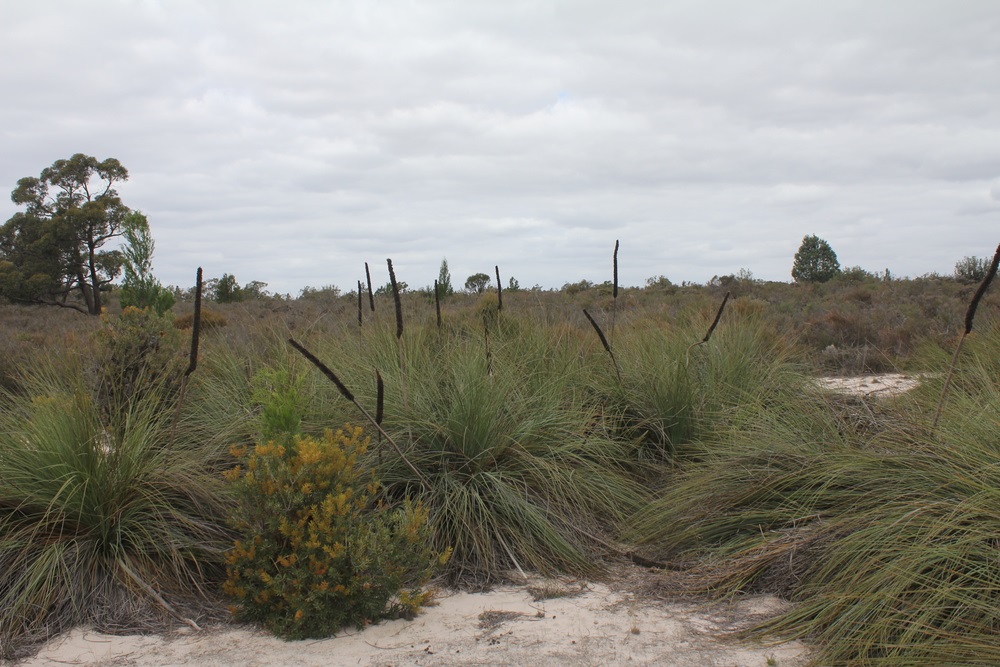Imagine, just for a second, that you were transported to far-Western Victoria as it was 300 years ago. The sweeping plains and occasional dunes continue on as far as the eye can see, with not a scrap of barbed wire in sight. There are enormous malleefowl mounds everywhere; on every sand dune the scurried traces of bilbies, quolls and bettongs abound. The many stemmed eucalypts explode from the sand in slow motion, hinting at a fire-scorched past.
These days, the Little Desert tells a different story: a story of rabbits, weeds and European farming. But what if that picture first painted could be recreated? What if the Little Desert, or at least sections of it, could hark back to a wilder time?

Conservation Volunteers Australia, in partnership with FAUNA Research Alliance and the Little Desert Nature Lodge, are hoping to do just that using rewilding, an emerging approach to conservation. Essentially, rewilding means reintroducing species where they once were and generally allowing nature to take its course. Putting the wild back into nature, as it were. The practice has grown to prominence recently in the UK, with the proposed reintroduction of lynx in Scotland. In Australia, a rewilded Little Desert may give people the opportunity to experience a Victorian landscape as it once was.
For Ben Holmes, Rewilding Manager at Conservation Volunteers, the opportunity to help rewild the Little Desert is an exciting prospect, especially given the rapid decline of Australia’s biodiversity: “If we can prove that rewilding works and implement it at landscape scales, we might be able to conserve some of Australia’s threatened species, and that’s why I’m on board.”
As Ben explains the Little Desert project in depth, it’s difficult to stop the mind from wandering, marveling at the possibilities that come with rewilding and what it means for conservation: “It’s time to try something new, and the evidence from around the world is starting to show that rewilding might be a key piece of the conservation puzzle.” Indeed, if a conservation program as ambitious as this is successful, it could inspire many others across Australia.
The effects of rewilding aren’t just about conservation, though; they can also permeate throughout society. Ben and Conservation Volunteers also want to use the project to rewild people: “Giving volunteers and the community an opportunity to get involved in a meaningful conservation project and connect with nature and Australia’s unique wildlife is integral to our vision.” Studies from many corners of the world show the benefits of connecting humans with nature.
Conservation projects can often take a little while to get going and while this project is two years in the making so far, Ben and Conservation Volunteers are keen to get things moving quickly: “Our aim is to run our monitoring program this spring and summer to give us an understanding of what species are here and how the ecosystem is functioning.”

After reaching this milestone – a crucial step in science – it’s time for the main event: “In about 12 months time, we will start reintroducing animals and monitoring their impact on the ecosystem.” The proposed species read like a mammal-watcher’s wishlist, with the western quoll, numbat, brush-tailed bettong and western barred bandicoot all expected to be returning home in the imminent future. All of these species are incredibly charismatic, but also in dire need of conservation support.
To reach this point, however, Conservation Volunteers and FAUNA Research Alliance are already years into the project, says Ben. Part of this is ensuring that this ambitious project is backed by the best science available: “FAUNA Research Alliance is helping us to develop a scientifically rigorous monitoring and research program to assess the impacts of rewilding. The baseline-monitoring program is being developed so that it can be undertaken by the community. For more complex monitoring and research, the academics from FAUNA will help us to find students to deliver the work.”
Despite the continued and seemingly unstoppable rise of rewilding in scientific literature as a viable addition to a land manager’s toolkit, it does have its critics. Some suggest that rewilding has too many unknowns associated with it, or that some proposals are unrealistic in their goals. However, Ben reiterates that the team is taking an evidence-based approach: “FAUNA Research Alliance, with their wealth of scientific knowledge and management expertise has helped design the scientific program to evaluate rewilding as a conservation tool. This, in combination with Conservation Volunteers’ community engagement skill and infrastructure, means the experiment can happen with minimal risk. Together we can make this happen.”
It’s that theme of togetherness that is fundamental to the ethos of Conservation Volunteers and those associated with the Little Desert project. As Ben explains, the community and volunteers will be involved every step of the way: “We will be developing a range of volunteer opportunities for the local and wider community. No matter where you’re from, you can come and stay with us at the Little Desert Nature Lodge, get your hands dirty and help rewild the desert.”
Given the precarious state of many species in Australia, and indeed Victoria, giving them a chance at a new (but very old) home can only be a good thing. Besides, what Victorian wouldn’t want to see bilbies, western quolls and numbats darting through the Little Desert as they once did, many years ago?
Banner image is courtesy of Billy Geary


Leave a Reply